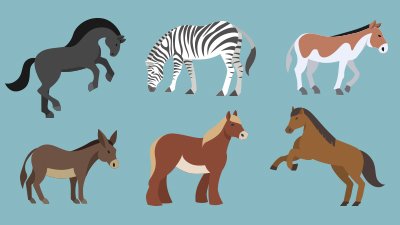Evolutionary Cuckoos
Have Australian birds “taken a new evolutionary step”? Or is this another cuckoo example of “evolution” in action?
News Source
- PhysOrg: “Cuckoos Evolve to Fool Angry Birds”
Australian cuckoo birds are strange creatures. The adults lay their eggs in nests built by other birds, then disappear and leave the hatchlings to fend for themselves. By no means timid, the newly born cuckoos—finding themselves in some other bird’s nest—do their best to oust the young birds that belong in the nest, taking it over for themselves.
The seemingly nasty trick that enables the chicks to accomplish the nest takeover is that cuckoo eggs are the same color as the eggs that belong in the nest; the bird that built the nest can’t distinguish the cuckoo eggs from her own. However, once they’re born, the cuckoos must work fast to force out the other young—if not, the other birds’ mother will kill the cuckoos.
Australian National University researchers have identified a new development in cuckoo deception, which they have labeled an example of evolution. Field experiments have confirmed the existence of cuckoo hatchlings whose color is closer to the color of the other chicks (which may be yellow, black, or pink, depending on the species of host bird). Thus, the adult birds cannot identify—and kill—the cuckoos until it’s too late.
“We have demonstrated that bronze-cuckoo nestlings have co-evolved to be striking visual mimics of their hosts,” said biologist Naomi Langmore. “Host parents will kill a parasite hatchling within the first two days of its life. But by matching the color of the host young, the cuckoos are accepted by their ‘parents.’”
Without evidence that the color deception is due to an increase in genetic information, this “evolution” offers no evidence for the reality of molecules-to-man evolution.
Once again, this may be an example of natural selection in action that has been relabeled “evolution” in action. True, the population of cuckoos is changing, which we may think of as “evolution” in one sense of the word. But without evidence that the color deception is due to an increase in genetic information, this “evolution” offers no evidence for the reality of molecules-to-man evolution.
In related news, a study of South American Corydoras catfish has concluded that groups of the fish that look quite similar may actually represent several species. The fish are said to have “evolved” nearly identical colors and patterns. In this case, even if we know the fish have converged to this similarity over time (the press release offers no details on the history of the fish appearance), processes like natural selection—not evolution—may explain the change.
Further Reading
For More Information: Get Answers
Remember, if you see a news story that might merit some attention, let us know about it! (Note: if the story originates from the Associated Press, FOX News, MSNBC, the New York Times, or another major national media outlet, we will most likely have already heard about it.) And thanks to all of our readers who have submitted great news tips to us. If you didn’t catch all the latest News to Know, why not take a look to see what you’ve missed?
(Please note that links will take you directly to the source. Answers in Genesis is not responsible for content on the websites to which we refer. For more information, please see our Privacy Policy.)

Answers in Genesis is an apologetics ministry, dedicated to helping Christians defend their faith and proclaim the good news of Jesus Christ.
- Customer Service 800.778.3390
- © 2024 Answers in Genesis




